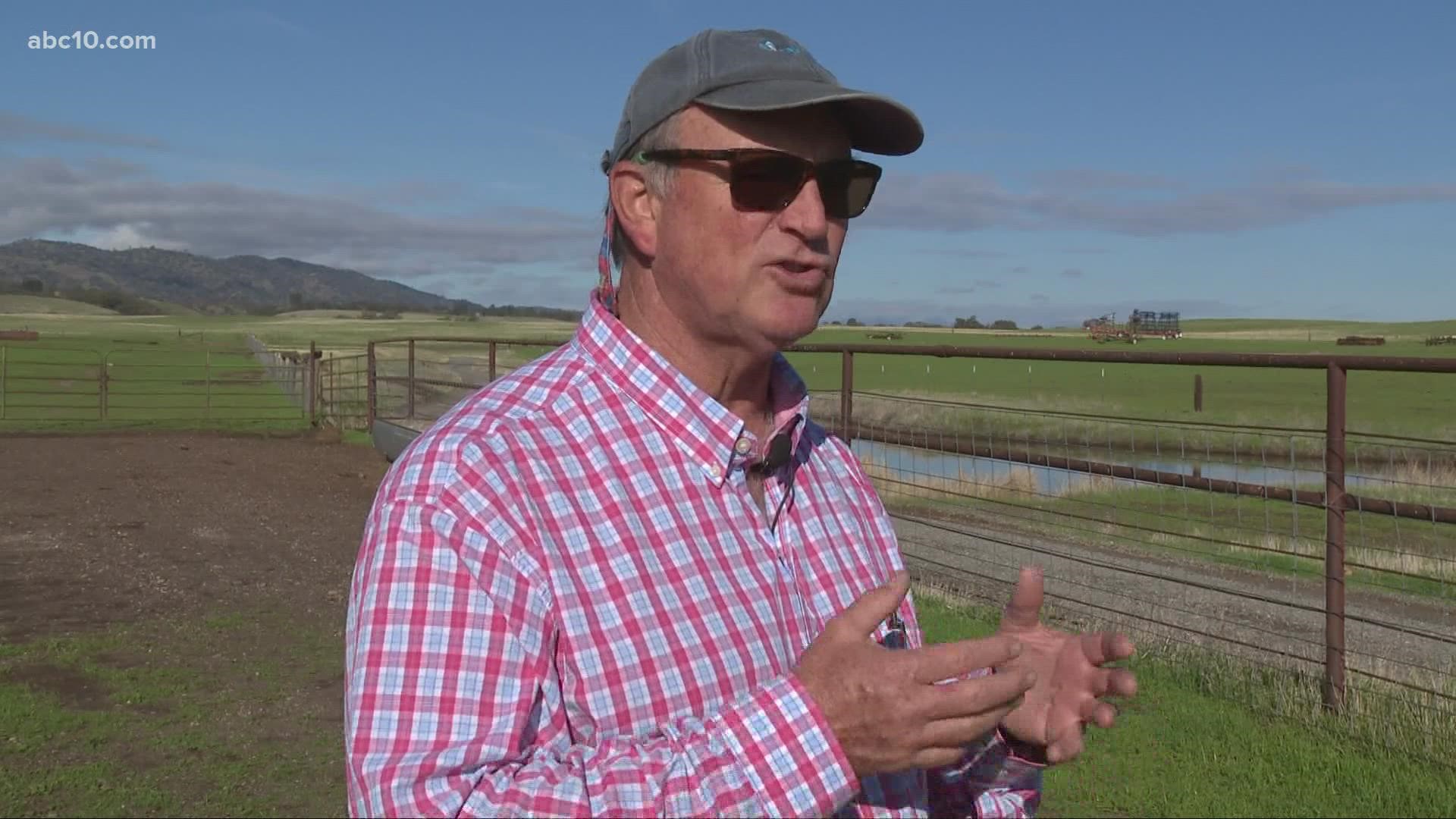CAPAY, Calif. — Local grower Fritz Durst is a sixth generation farmer out of Capay Valley. Over the last 30 years, Durst says he and his family have taken a no-till approach to farming.
The practice of tilling land has been around since the beginning of farming. Later European settlers to North America and Native Americans used iron, and steel mechanisms along with horses to till the land.
Tilling the land rids it of weeds, pests, and prepares the soil for planting seeds. In the process, it also emits carbon dioxide, and causes soil to erode. Erosion of top soil happens much faster through tillage because the natural elements of rain and wind remove nutrients from the earth.
“I'm reading my great grandfather's diaries in 1875, he was having to fill in the erosion scars on the sides of the hills, so we've spent over 115 years eroding our soils,” Durst said. "I used to remember in the springtime the smell of plowing. Just a beautiful smell. I've later come to find out that odor is the odor of CO2. So you would notice it just driving, going around the field, you'd smell the CO2 coming off. And today, I'm trying to minimize that. So I'm leaving more carbon in the soil, which causes it to get healthier."
No-till farming has shown to have many benefits. In fact, it’s popularity is growing. According to the International Journal of Agricultural and Biological Engineering has seen a growth rate of 6 million Hectare per year from 2003 to 2009. In South America, no-till farming is being seen now on about 70% of cultivated areas.
The approach allows the land to take care of itself. The weeds keep the soil in tact, while cows, elk, deer, or other animals graze and leave behind manure. That organic material is incorporated into the soil, providing it with nutrients.
“Animal feces are really important for the soil biology. The more organic matter you get, the more resistant your soil is to compaction” Durst said.
The less compact the soil is, the less run-off is expected, another benefit of no-till farming. Conserving water into the land, rather than see it become run-off, may be the main method of farming California will need to utilize as drought conditions worsen.
Isabel Alicia Del Blanco is a Grain Breeder with UC Davis and has cross bred different strands of barley and different strands of wheat to find the optimal crop for farmers.
“Some people don’t believe in fact, or science," Del Blanco said. "Living in California is no doubt you know, you have a more drought, more fires every year."
Del Blanco works in a controlled environment of a UC Davis greenhouse. She grows a variety of barley and grain, looking for the plants that grow the tallest and have the best protein. She then breeds those two together and surveys the newest growth by planting this new breed in farms like Fritz Durst's land. She says this is the best way to find the most resilient crop that is able to withstand climate change conditions.
“Genetic resistance is the best way. And you don't use pesticides” Del Blanco said. “The farmer has to choose which crop to grow, because they don't have water for all the crops, I think is, is obvious… we have to switch to crops that don't require so much water” she went on.
Grain crops, like wheat and barley, grow easily in California just off mother nature's rain production. It has seen great production in no-till scenarios.
California's climate has made it one of the best places to grow all kinds of diverse crops. Many farmers over the last several decades have switched from more native agriculture like wheat, barley, and agave, and transitioned to high profit crops like almonds. The problem is, the water abundance isn't always stable. The drought situation in California has continued to grow with eight of the last 10 years, resulting in below average or exceptional drought.
"You know, we were world renowned for some of our cereals for decades," Durst said. "And we switched away from grains and we're letting somebody else raise that, but some of the quality that you can get here is you can't find it elsewhere."
With only about 6.50 inches of rain water in the 2020-21 water year, many agree, we need to find way to improve our climate change situation.
"It worries me that there are people who that don't understand that we are going in that direction. It's very dangerous. We don't have a planet B" Del Blanco said.
A USDA study showed an average farmer in the Corn Belt who reduced their normal tillage was able to capture or sequester 33% more metric tons of CO2 per acre over 20 years. The average farmer with a completely no-till farming operation was able to pull in 64% of CO2 back into the soil.
"I think that's the way forward," Durst said. "We have to live one with nature, we can't be us or them,"
ABC10: Watch, Download, Read
Watch more from ABC10
Drought resistant barley, having trouble growing in exceptionally dry conditions

















